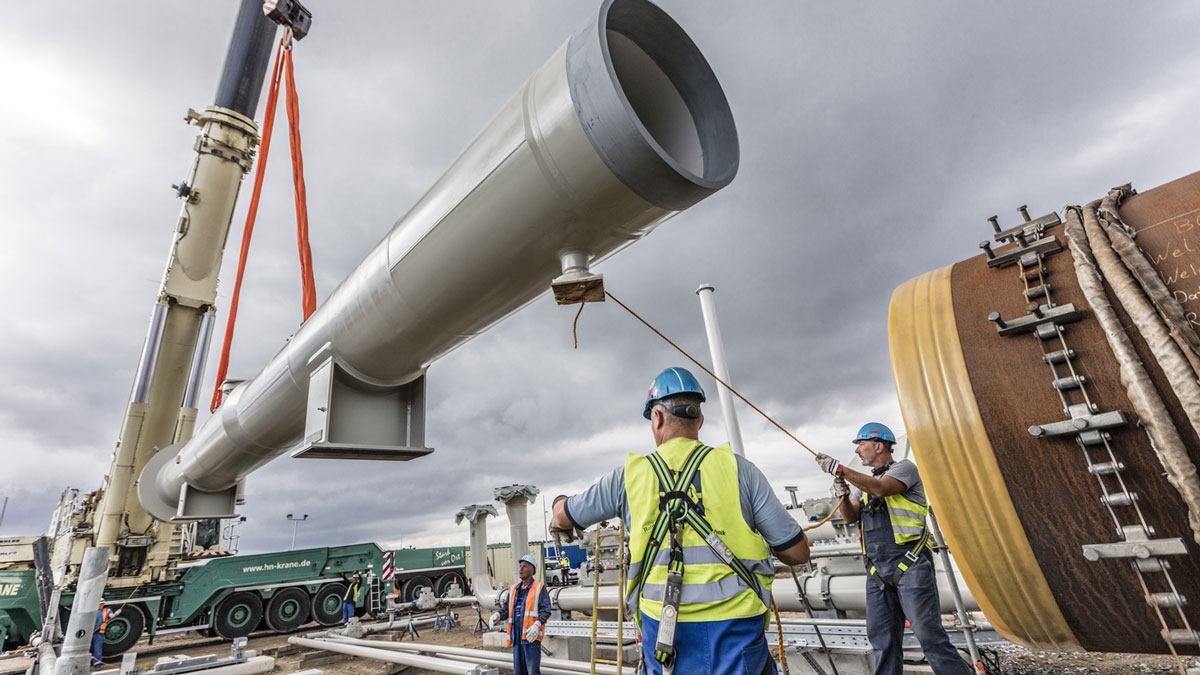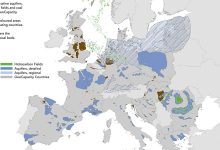Europe Taken Captive by Russia’s Pipeline Army
As anticipated by economic analysts, gas prices increased immediately after Russia’s attack on Ukraine. European benchmark prices climbed by 41% on February 24, the day the war broke out. Also, oil prices suddenly exceeded USD 100/bbl and reached the highest level recorded since 2014. Prospects for Europe are pessimistic in terms of prices, in conditions in which the continent depends on Russia to ensure more than one third of its consumption needs, and stocks are very low.
Approximately a quarter of Russian gas supplies transit the Ukrainian territory, and a degeneration of the conflict could disrupt or even cease supplies. “In the event of prolonged disruption, gas inventory couldn’t be rebuilt through the summer. We’d be facing a catastrophic situation of gas storage being close to zero for next winter. Prices would be sky high. Industries would need to shut down. Inflation would spiral. The European energy crisis could very well trigger a global recession,” said Kateryna Filippenko, principal analyst at Wood Mackenzie.
Nord Stream 2 certification, stopped
One of the first measures announced as a result of the political-military crisis triggered by Vladimir Putin was the announcement of German chancellor Olaf Scholz that he had stopped the Nord Stream 2 gas pipeline certification process. The pipeline, whose construction was completed in September 2021 and cost USD 11 billion, has a length of 1,230 kilometres and would have carried gas directly from Russia to Germany and from there further to Europe. Currently, Germany receives Russian gas through Nord Stream 1, a gas pipeline undercrossing the Baltic Sea. Pressure on Germany to stop this project has been constant over the past few years, but former chancellor Angela Merkel has refused to comply with this request from the US. Asked in an interview with ARD, the public broadcaster of Germany, if Nord Stream 2 gas pipeline could be commissioned one day, chancellor Olaf Scholz said: “We are now in a situation where nobody should bet on it. We’re a long way from that now”.
More sharply, Economy Minister Robert Habeck said, also for ARD, that the project could be cancelled altogether. Instead, Russia sees in the fall of the project a sign that Europe is not a trustworthy partner.
“If the Nord Stream 2 project fails, which is a distinct possibility, it will confirm the [Russian – Ed.] perception that Europe is an untrustworthy partner with whom you cannot collaborate because they cannot agree on anything and make any decisions,” said Andrey Kortunov, director-general of the Russian International Affairs Council.
Looking for supply options
Faced with the new reality, the US and Europe are trying to find the best gas supply options, should Russia use this as a form of blackmail. Biden Administration has had a number of discussions with several European countries, from the Middle East and Asia, on increasing LNG production for Europe. Biden Administration will conclude an agreement with important LNG producing countries for gas supplies to Europe, the pillar of this agreement following to be Qatar, one of the largest gas producers in the world and the second largest LNG exporter, after Australia.
Libya could also be considered, given its large gas production and proximity to the European continent.
Last but not least, the United States would also have an important role in LNG supply. Another source could be Azerbaijan, and the European Union plans to ask this country to ensure emergency supplies in case of disruptions. To this end, EU’s Energy Commissioner Kadri Simson will go to Baku in March to hold discussions with the Azerbaijani officials.
Dependence on Russian gas
Gazprom’s chairman Alexei Miller announced that 2021 was a record year for Gazprom, both in energy production and in terms of sales profits, and Gazprom shareholders have reasons to rejoice. The Russian state controls most Gazprom shares and decides the concern’s actions. But Gazprom shareholders are also German companies, for example energy supplier E.ON and many other smaller investors. Between Gazprom and the Kremlin there is a particularly close relation. Gazprom’s long-time Chairman Alexei Miller is an old friend of Russian President Vladimir Putin, which means that Putin who almost always sits at the table of Gazprom’s supervisory board and the board of directors, informs dw.com.
The company is the largest gas producer in the world, has almost 500,000 employees and claims to hold the biggest gas reserves in Russia.
Gazprom’s market power in Europe is the result of Russian giant’s monopoly. Russian legislation stipulates that only Gazprom is allowed to operate pipelines used for export. Therefore, this company has been the biggest supplier to the European Union for decades.
Around 43% of gas used in the EU comes from Russia. The rest comes from Norway, from LNG shipments from the Middle East and the US, as well as from Algeria and Libya, according to European statistics authority Eurostat. But the market share of Russian gas varies massively from one country to another within the Community bloc. The general rule sounds like this: the farther east they are, the more dependent European countries are on Russian gas. For example, Germany, the largest consumer in the EU, receives approximately 55% of the gas needs from Gazprom, according to dw.com analysis.
Waiting for Black Sea gas
Dmitri Medvedev, former Prime Minister of Russia, had an extremely trenchant message to Europe, after Germany blocked the Nord Stream 2 project. In a Twitter post, he threatened that Europe would pay EUR 2,000 per thousand cubic meters of gas, that is four times more than at the moment. This warning should determine the authorities in Bucharest to accelerate Black Sea gas exploitation, after it has been unreasonably delayed. Energy Minister Virgil Popescu says extraction is expected to begin this year from Ana-Doina block, where the titleholder is the US company Black Sea Oil & Gas and where the estimated reserves amount to 8bcm of gas.
Also, gas exploitation is expected to begin in 2026 in the Neptun Deep Block, where the titleholders are OMV Petrom and, more recently, Romgaz.
In order to start extraction from this field, whose reserves are estimated more recently to 100bcm of gas, the investment decision should be made this year or next spring by OMV Petrom and the Romanian Parliament should amend the Offshore Law, which has been insistently requested by investors over the past few years.
Currently, Romania produces 80% of the gas it consumes, and the rest comes from import. These quantities coming from Russia recorded an accelerated price increase lately. Therefore, while at the end of last year the price was RON 245/MWh, in January 2022 the price climbed to RON 357/MWh.







